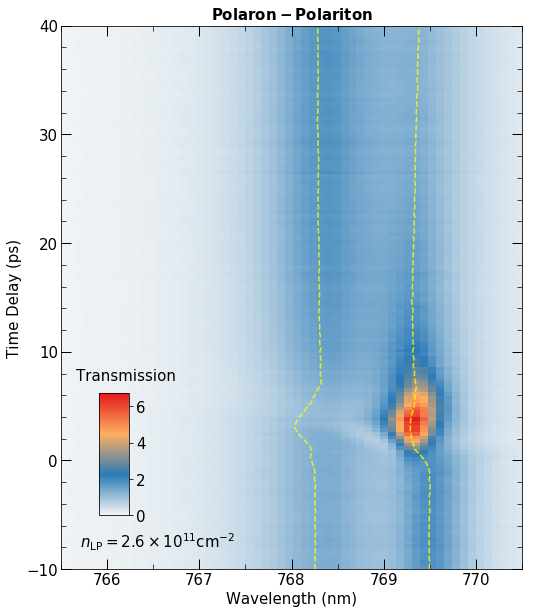Quantum Optics with Transition Metal Dichalcogenides
Transition metal dichalcogenide (TMD) monolayers, such as molybdenum diselenide, represent a new class of two-dimensional (2D) valley semiconductors, exhibiting features such as a valley pseudospin degree of freedom, ultra-strong Coulomb interactions and Berry curvature with novel optical signatures. The optical and electronic properties of TMD monolayers can be tailored by embedding them in van der Waals heterostructures. Of particular interest for our research is the possibility to use applied gate voltages to control the itinerant carrier density, which in turn dramatically modifies the nature of optical excitations. Over-arching goal of our research is to combine van der Waals heterostructures with photonic nanostructures to realize a new platform for quantum photonics.
Interacting polaron polaritons
Strong exciton binding in monolayer valley semiconductors like MoSe2 has two principal consequences: on the one hand, it yields enhanced exciton-photon coupling, leading to the formation of exciton-polaritons when the monolayer is embedded in a microcavity. On the other hand, interactions between excitons scale inversely with exciton binding, ensuring that the optical response is predominantly linear. If the monolayer hosts itinerant electrons, an optically injected exciton acts as a robust mobile quantum impurity that is dressed by Fermi-sea electron-hole pairs. The elementary optical excitations in this limit are termed exciton-polarons, or polaron-polaritons if the monolayer is embedded in a microcavity [1]. Using time-resolved pump-probe experiments, we have recently observed that the interaction strength of polaron-polaritons is enhanced by a factor of 50 at low electron densities as compared to bare exciton-polaritons [2], which is a direct consequence of the depletion of the Fermi sea around a polaron-polariton excitation.

References
- external page [1]Fermi polaron-polaritons in charge-tunable atomically thin semiconductors Meinrad Sidler, Patrick Back, Ovidiu Cotlet, Ajit Srivastava, Thomas Fink, Martin Kroner, Eugene Demler and Atac Imamoglu, Nature Physics, ol. Qe, pp. 255-261 (2016)
- external page [2] Interacting Polaron-Polaritons Li Bing Tan, Ovidiu Cotlet, Andrea Bergschneider, Richard Schmidt, Patrick Back, Yuya Shimazaki, Martin Kroner, Atac Imamoglu, arXiv (2019)